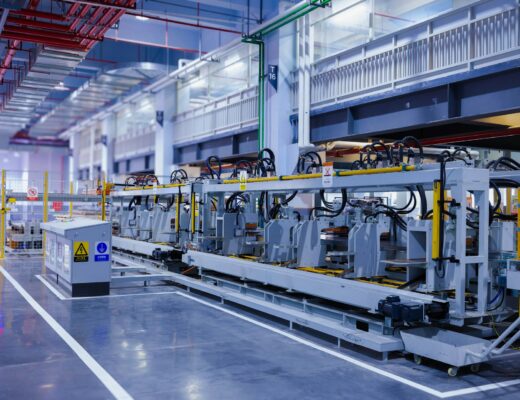Heat trace systems represent a critical investment in industrial infrastructure, protecting pipes, tanks, and equipment from freezing while maintaining optimal operating temperatures.
Yet many facilities struggle with premature system failures, unexpected downtime, and escalating replacement costs.
The difference between systems that fail within a few years and those that operate reliably for decades often comes down to one factor: consistent, proactive maintenance. Proper system maintenance goes beyond simple visual inspections.
It requires understanding the unique challenges that heating cables face in harsh industrial environments, recognizing early warning signs of deterioration, and implementing systematic approaches to preserve system integrity.
When executed correctly, a comprehensive maintenance program can extend system life by 50% or more while reducing emergency repair costs and operational disruptions.
This comprehensive approach to heat trace upkeep ensures your investment continues delivering reliable performance year after year, protecting both your equipment and your bottom line.
Essential Daily and Weekly Monitoring Practices
Visual Inspection Protocols
Regular visual inspections form the foundation of effective heat trace maintenance. During daily rounds, operators should examine heating cables for signs of physical damage, including cuts, abrasions, or compression from equipment movement.
Pay particular attention to areas where cables cross walkways, pass through wall penetrations, or connect to junction boxes.
Key visual inspection points include:
- Cable jacket integrity and color changes
- Moisture accumulation around connections
- Proper cable support and spacing
- Insulation condition and displacement
- Junction box seals and gasket condition
Temperature Monitoring Systems
Implementing continuous temperature monitoring provides early detection of system irregularities. Install temperature sensors at critical points along heated circuits, particularly at the furthest points from power sources where voltage drop effects are most pronounced.
Modern monitoring systems can alert maintenance teams to temperature deviations before they cause process disruptions or equipment damage. Establish baseline temperature profiles during commissioning and compare ongoing readings against these benchmarks.
Gradual temperature decreases often indicate cable degradation, while sudden temperature spikes may signal insulation breakdown or short circuits.
Documentation and Record Keeping
Maintain detailed logs of all inspection findings, temperature readings, and maintenance activities. This documentation creates valuable trend data that helps predict maintenance needs and supports warranty claims when necessary.
Digital maintenance management systems can automate much of this record-keeping while providing analytical tools for identifying patterns and scheduling preventive work.
Electrical Testing and Performance Verification
Insulation Resistance Testing
Annual insulation resistance testing using a megohmmeter provides crucial insights into cable condition.
Test between conductors and from each conductor to ground, recording values at consistent test voltages. Declining insulation resistance values over time indicate moisture ingress or insulation degradation that requires attention.
Establish minimum acceptable resistance values based on manufacturer specifications and industry standards. Typically, readings below 100 megohms warrant further investigation, while values under 20 megohms may require immediate corrective action.
Circuit Continuity and Current Draw Analysis
Verify proper circuit continuity and measure current draw across all heating zones. Compare current readings to original commissioning data and manufacturer specifications. Significant deviations may indicate:
- Cable damage or degradation
- Connection problems
- Improper circuit loading
- Controller malfunction
Use thermal imaging cameras during energized testing to identify hot spots that could indicate loose connections or cable damage. This non-invasive testing method reveals problems that aren’t visible during standard visual inspections.
Ground Fault Detection Systems
Implement ground fault circuit interrupters (GFCIs) or ground fault monitoring systems appropriate for your specific application.
These protective devices detect current leakage that could indicate insulation breakdown or moisture intrusion. Regular testing ensures these safety systems function properly when needed.
Preventive Maintenance Schedules and Procedures
Seasonal Maintenance Requirements
Develop maintenance schedules that account for seasonal operating demands and environmental conditions.
Pre-winter inspections should focus on verifying system readiness for peak heating loads, while post-winter reviews identify damage from freeze-thaw cycles or extreme weather events.
Spring maintenance activities include:
- Comprehensive electrical testing after winter shutdown
- Insulation inspection and repair
- Junction box cleaning and seal replacement
- Calibration of temperature controllers and monitoring systems
Fall preparation involves:
- Full system functionality testing
- Spare parts inventory verification
- Emergency response procedure review
- Training refreshers for operating personnel
Component Replacement Intervals
Establish replacement intervals for consumable components based on manufacturer recommendations and operating experience. Common replacement items include:
- Controller contacts and relays (3-5 years)
- Temperature sensors (5-7 years)
- Junction box gaskets and seals (2-3 years)
- Contactor coils and auxiliary contacts (5-10 years)
Lubrication and Mechanical Maintenance
Don’t overlook the mechanical aspects of heat trace systems. Lubricate motorized valve actuators, damper drives, and other moving components according to manufacturer schedules.
Check mounting hardware for corrosion or looseness, particularly in vibrating equipment applications.
Environmental Protection and Cable Care
Moisture Control Strategies
Moisture represents the primary enemy of heating cable durability. Implement comprehensive moisture control measures, including:
- Proper drainage around ground-level installations
- Vapor barriers in underground applications
- Regular inspection and maintenance of cable entry seals
- Prompt repair of any insulation damage
Consider installing moisture detection systems in critical areas to provide early warning of water intrusion. These systems can trigger alarms before moisture reaches levels that damage electrical components.
Chemical Compatibility Assessment
Regularly assess the chemical compatibility of cable materials with process fluids and cleaning agents used in your facility.
Some chemicals can degrade cable jackets or insulation over time, particularly at elevated temperatures. Replace incompatible cables with chemically resistant alternatives when necessary.
Physical Protection Measures
Install appropriate physical protection for heating cables in high-traffic areas or locations subject to mechanical damage. Options include:
- Cable trays and raceways
- Protective conduit or armor
- Guards and barriers around vulnerable connections
- Impact-resistant junction boxes
Troubleshooting Common Performance Issues
Identifying Heat Loss Problems
When systems fail to maintain target temperatures, systematic troubleshooting helps identify root causes. Common issues include:
Insufficient Heat Output:
- Verify proper circuit sizing and loading
- Check for damaged or degraded cables
- Confirm adequate insulation thickness and condition
- Assess ambient temperature effects
Uneven Heating Patterns:
- Inspect for cable spacing irregularities
- Identify areas with compromised insulation
- Check for proper installation techniques
- Verify controller calibration and operation
Electrical Fault Diagnosis
Use systematic approaches to diagnose electrical faults:
- Circuit Mapping: Verify circuit configuration matches design drawings
- Voltage Measurements: Check supply voltage at multiple points
- Current Analysis: Compare actual vs. expected current draw
- Insulation Testing: Identify moisture or insulation breakdown
- Thermal Imaging: Locate overheating components or connections
Performance Optimization Techniques
Optimize system performance through:
- Controller programming adjustments
- Insulation upgrades in problem areas
- Cable repositioning for better heat distribution
- Installation of additional temperature sensors for improved control
System Upgrades and Modernization Strategies
Technology Integration Opportunities
Modern heat trace systems offer significant advantages over older installations. Consider upgrading to smart controllers that provide:
- Remote monitoring capabilities
- Predictive maintenance alerts
- Energy consumption optimization
- Integration with facility management systems
These upgrades can pay for themselves through reduced maintenance costs and improved energy efficiency.
Phased Replacement Planning
Develop long-term replacement strategies that balance system reliability with budget constraints. Prioritize upgrades based on:
- Critical process requirements
- System age and condition
- Maintenance cost trends
- Energy efficiency improvements
Consider pilot installations to evaluate new technologies before full-scale implementation.
Compatibility Considerations
When upgrading components, ensure compatibility with existing system elements. Mixing different generations of equipment can create performance issues or complicate troubleshooting.
Maintain detailed records of all system modifications to support future maintenance activities.
Maximizing Your Investment Through Proactive Care
Effective heat trace maintenance requires commitment to systematic procedures and continuous improvement. The most successful maintenance programs combine regular inspections, scheduled testing, prompt problem resolution, and strategic upgrades.
By implementing these practices, facilities can achieve system lifespans that exceed manufacturer expectations while maintaining reliable performance throughout the equipment’s service life.
Remember that prevention costs far less than replacement. Every dollar invested in proactive maintenance typically saves three to five dollars in avoided repair costs and operational disruptions.
The key lies in consistency—irregular maintenance efforts often prove less effective than modest but consistent care.
Start with basic inspection and testing procedures, then build more sophisticated monitoring and analysis capabilities as your program matures. Your heating cables and bottom line will both benefit from this investment in long-term system health.







